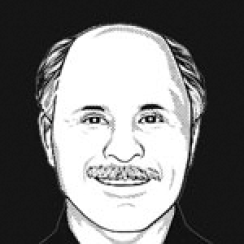Viking Global Investors founder O. Andreas Halvorsen has made it very clear he is not happy with his firm’s 2016 results.
Last year Viking Global Equities, the Tiger Cub’s long-short hedge fund, posted a 4 percent loss, its worst year since its 1999 launch. The firm’s Viking Long Fund eked out a 3.9 percent gain for the year, lagging the MSCI World Index by 5.1 percentage points, the first year since its launch in 2009 that it failed to beat the benchmark. Viking declined to comment.
“We are very disappointed by these results, which fall well short of our aspirations on both an absolute and a relative basis,” Halvorsen told clients in his fourth-quarter letter, dated January 17 and obtained by Institutional Investor.
In fact, this is the sixth year in the past seven that Viking’s long-short fund lagged its historic annualized gain of 15.8 percent. To its credit, Viking’s long-short fund is more consistent and much less volatile than most others of its kind. This is underscored by the fact that it was down just 0.9 percent in each of the two years it previously lost money. As a result, Viking investors don’t tend to surrender their earlier gains when the firm suffers through a losing year.
All this is clearly no consolation to Halvorsen and his team, which is apparent in a letter to clients detailing where Viking needs to improve.
In the letter, former Norwegian Navy SEAL Halvorsen places the blame for the disappointing performances squarely on the execution of its long book. “We have spent a significant amount of time reviewing our processes and performance to identify areas for improvement,” he told clients.
He said that the stock selection, research and analysis process “remains sound” but conceded that portfolio management was “problematic,” stressing that sector weightings and sizing “detracted from performance.”
For example, Halvorsen seemed satisfied that while “aggregate alpha was negative in 2016,” alpha from individual stocks was “a modest positive” across all sectors. “We also continued to produce stock-level alpha on days when companies in our portfolio reported earnings, indicating that we were on the right side of consensus earnings,” he added. The upshot: The firm’s research efforts, Halvorsen argued, “were constructive and added value for the year.”
On the other hand, the hedge fund manager conceded that industry and sector exposure, which in the past boosted returns, produced negative alpha of 6.2 percent. “In a year when sector selection turned out to be a significant driver of returns, our concentrated bets, being at a decade high, proved to be largely wrong.”
Specifically, he pointed out that in the fourth quarter energy and internet-related stocks gave back some of their earlier gains and its drug stocks performed poorly.
Although Viking’s funds had some big winners for the year, the gains were “offset by sizeable losers” from four stocks, three of which were health-care issues.
Moving forward, Halvorsen told clients that Viking is focusing on three areas for improvement.
First, it has made changes to its organizational structure, shifting managerial responsibility and capital. For example, its senior portfolio managers and direct reports have seen the capital they manage grow, with a promise that it will grow even more this year.
Second, Halvorsen plans to expand the universe of stocks the firm covers. He said Viking currently covers 60 percent of all stocks in the world that trade more than $50 million each day and nearly 75 percent that trade more than $100 million daily. “There is still, however, a significant portion of our investible universe that remains uncovered; this presents an opportunity to source incremental investment ideas by expanding and augmenting our existing coverage effort,” he explained.
Third, Halvorsen says the firm hired Samer Takriti, an experienced risk quant formerly with Goldman Sachs, to boost the firm’s analytical capabilities in risk management. “Samer is partnering with our existing performance and risk team to analyze position and portfolio level risk,” Halvorsen said.
Meanwhile, Viking continues to pare its exposure to health-care stocks, once a dominant theme in its two main funds.
As of year-end, it reported a negative 1 percent exposure to the sector — specifically, pharmaceuticals and biotechnology — in the long-short fund. This compares to two years ago when it had a 21.3 percent net long exposure to the sector. Since then, Viking has been gradually paring back this bet.
Looking ahead, Halvorsen stressed that several longs that hurt performance in 2016 remain top-ten positions “because we believe they have superior fundamentals and valuation upside in light of the sector rotation that has occurred.” They don’t include health-care stocks, however.Entering 2017, its top-ten longs were Alphabet (both classes), Facebook, Microsoft, Amazon.com, Volkswagen, Dow Chemical, Adidas, Deere, JD.com, and Netflix.
They replace five stocks that ranked among the top ten at the end of the third quarter: Teva Pharmaceuticals, Viking’s worst long performer last year, which it has exited altogether; AstraZeneca, another drug maker; Broadcom; Mastercard; and Air Products & Chemicals.
Viking Global also liquidated a number of shorts that Halvorsen said “would have benefited significantly from a lower corporate tax rate.”







